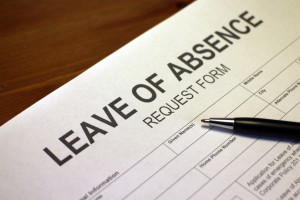 This month, the Equal Employment Opportunity Commission (EEOC) issued new guidelines on providing leave as a reasonable accommodation for employees with disabilities. The Americans with Disabilities Act (ADA) requires covered employers (employers with 15 or more employees) to provide reasonable accommodations to enable employees with disabilities to perform their jobs. The EEOC article describes basic principles and uses examples to illustrate how leave as a reasonable accommodation is correctly handled. The advice is timely given that the EEOC reports a record increase in the number of disability charges filed with the agency.
This month, the Equal Employment Opportunity Commission (EEOC) issued new guidelines on providing leave as a reasonable accommodation for employees with disabilities. The Americans with Disabilities Act (ADA) requires covered employers (employers with 15 or more employees) to provide reasonable accommodations to enable employees with disabilities to perform their jobs. The EEOC article describes basic principles and uses examples to illustrate how leave as a reasonable accommodation is correctly handled. The advice is timely given that the EEOC reports a record increase in the number of disability charges filed with the agency.
Equal Access to Leave Under an Employer’s Leave Policy
Employees with disabilities must be provided with access to leave on the same basis as all other similarly-situated employees. Employers must treat an employee requesting leave, for reasons related to a disability, the same as an employee who requests leave for a non-disability-related reason. Similarly, an employer may not penalize an employee for using leave as a reasonable accommodation.
Granting Leave Reasonable Accommodation
Reasonable accommodation never requires an employer to provide paid leave beyond its paid leave policy. Unpaid leave as a reasonable accommodation should be considered when an employee is not otherwise entitled to leave, as where:
- the employer does not offer leave as an employee benefit;
- the employee is not eligible for leave under the employer’s policy; or
- the employee has exhausted other leave entitlements.
The Interactive Process
If an employee has no other leave options available, the employer and employee must engage in an “interactive process” to determine the feasibility of providing leave, or additional leave, as a reasonable accommodation. An employer may consider specific reasons for the leave, the amount and type of leave required, information provided by a health care provider, and any alternatives to leave. An employer can deny requests for leave when it can show that providing the accommodation would cause undue hardship.
Maximum Leave
In general, employees with disabilities are not exempt from capped leave policies. However, employers may be required to extend leave beyond their maximum leave policies to provide reasonable accommodation.
Return to Work
The purpose of providing leave as a reasonable accommodation is to enable an employee to return to work following the period of leave. An employee may return to work, even where recovery is not 100% complete, if the employee can perform her job with or without reasonable accommodation, unless the needed accommodation would cause an undue hardship or the employee’s condition poses a “direct threat” that cannot be mitigated by a reasonable accommodation. Employers should engage in the interactive process when the return to work plan comes with restrictions.
Undue Hardship
An employer is not required to experience undue hardship in granting leave as a reasonable accommodation. Factors to be considered are:
- the amount and/or length of leave required;
- the frequency of the leave (a certain number of days a month, for example);
- whether there is any flexibility with respect to the days on which leave is taken;
- whether the need for intermittent leave on specific dates is predictable or unpredictable;
- the impact of the employee’s absence on coworkers and completion of specific job duties; and
- the impact on the employer’s operations and its ability to serve customers/clients.
Employers should review leave policies to ensure they comply with ADA objectives. Keeping an open dialog with an employee who has a disability is likely to lead to the most productive outcome.
